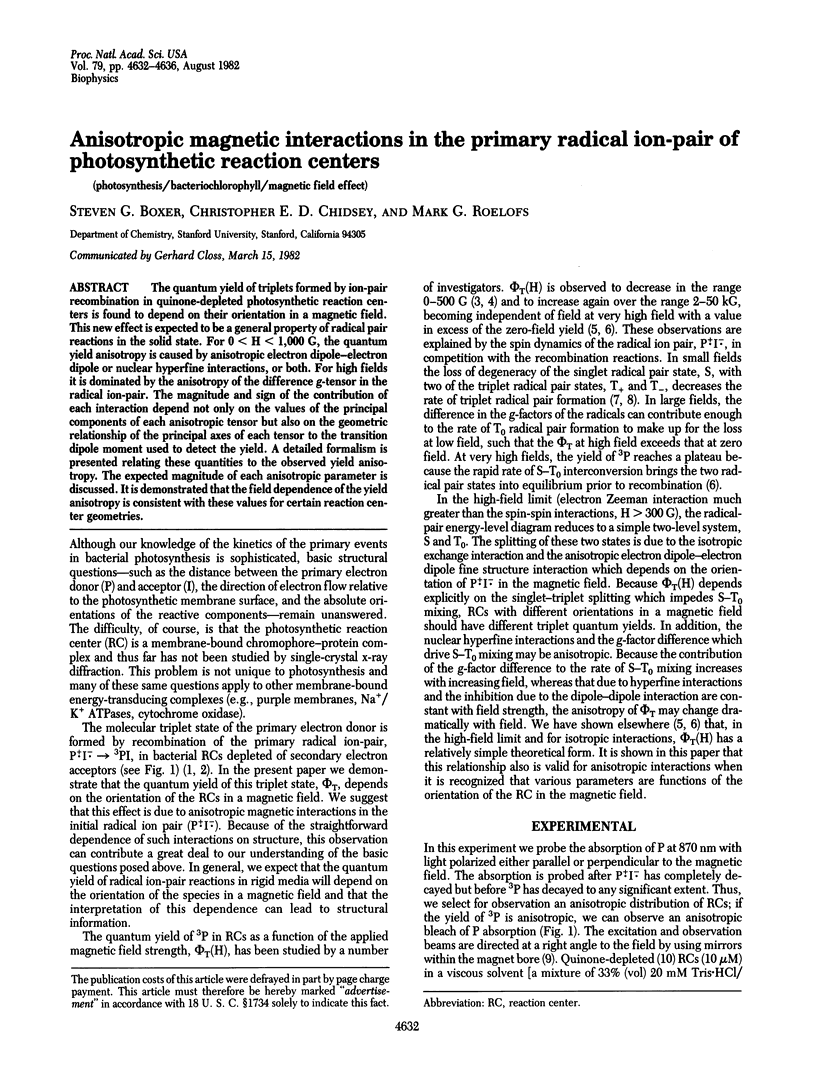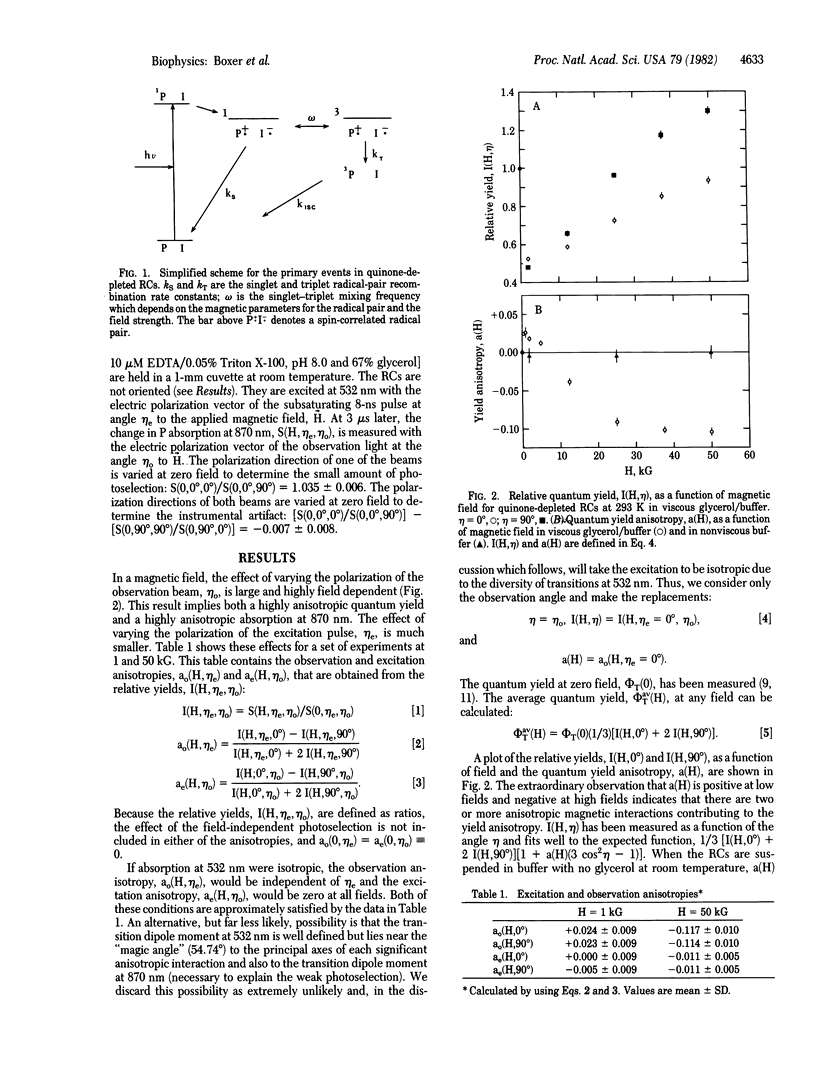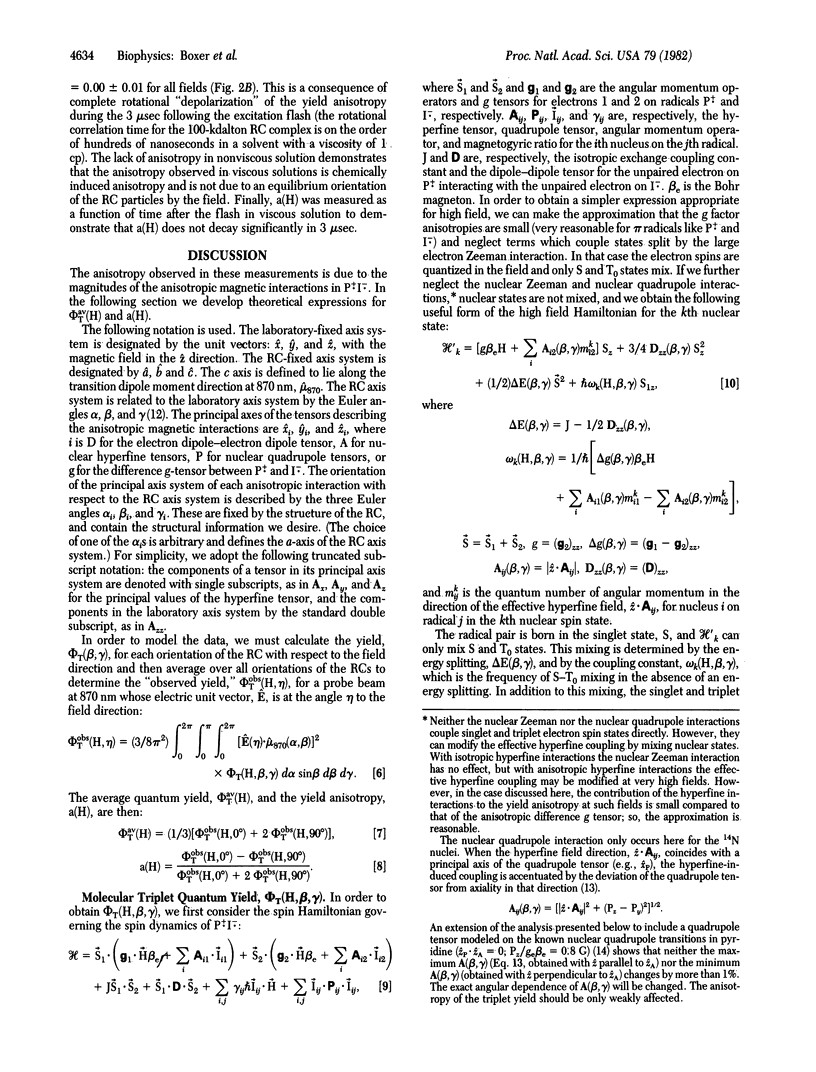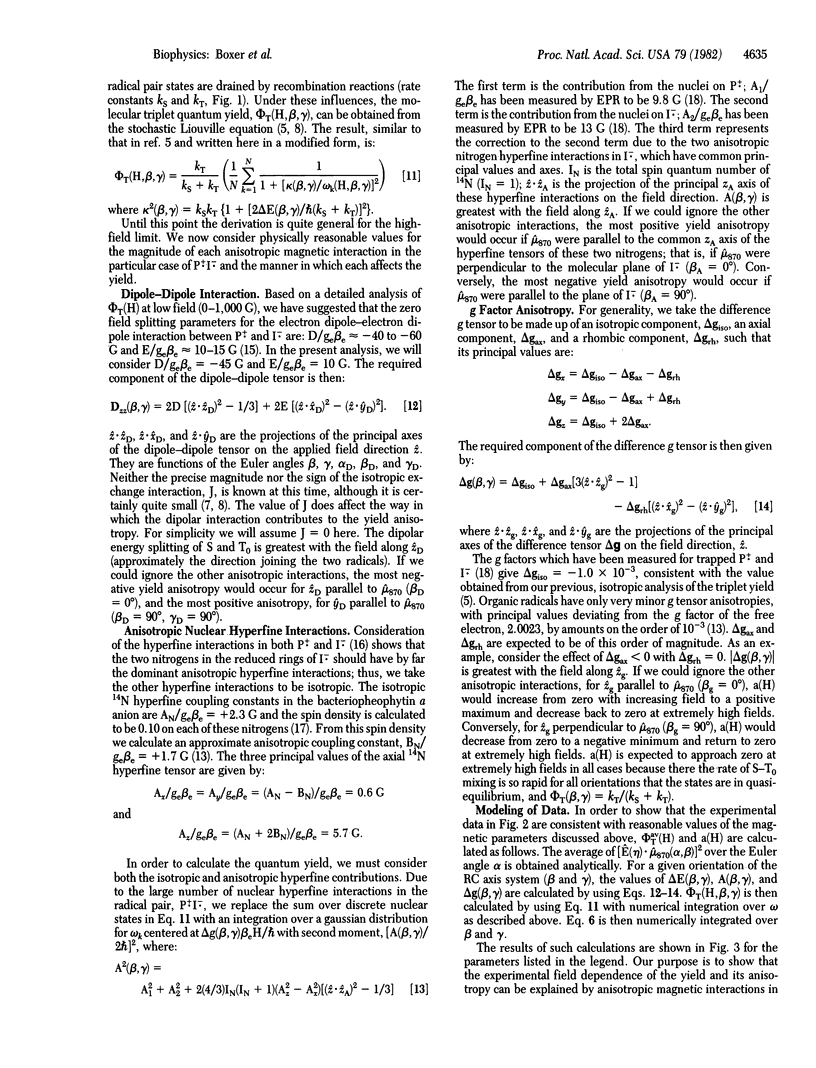Abstract
The quantum yield of triplets formed by ion-pair recombination in quinone-depleted photosynthetic reaction centers is found to depend on their orientation in a magnetic field. This new effect is expected to be a general property of radical pair reactions in the solid state. For 0 < H < 1,000 G, the quantum yield anisotropy is caused by anisotropic electron dipole-electron dipole or nuclear hyperfine interactions, or both. For high fields it is dominated by the anisotropy of the difference g-tensor in the radical ion-pair. The magnitude and sign of the contribution of each interaction depend not only on the values of the principal components of each anisotropic tensor but also on the geometric relationship of the principal axes of each tensor to the transition dipole moment used to detect the yield. A detailed formalism is presented relating these quantities to the observed yield anisotropy. The expected magnitude of each anisotropic parameter is discussed. It is demonstrated that the field dependence of the yield anisotropy is consistent with these values for certain reaction center geometries.
Keywords: photosynthesis, bacteriochlorophyll, magnetic field effect
Full text
PDF




Selected References
These references are in PubMed. This may not be the complete list of references from this article.
- Blankenship R. E., Schaafsma T. J., Parson W. W. Magnetic field effects on radical pair intermediates in bacterial photosynthesis. Biochim Biophys Acta. 1977 Aug 10;461(2):297–305. doi: 10.1016/0005-2728(77)90179-7. [DOI] [PubMed] [Google Scholar]
- Bowman M. K., Budil D. E., Closs G. L., Kostka A. G., Wraight C. A., Norris J. R. Magnetic resonance spectroscopy of the primary state, P, of bacterial photosynthesis. Proc Natl Acad Sci U S A. 1981 Jun;78(6):3305–3307. doi: 10.1073/pnas.78.6.3305. [DOI] [PMC free article] [PubMed] [Google Scholar]
- Butler W. F., Johnston D. C., Shore H. B., Fredkin D. R., Okamura M. Y., Feher G. The electronic structure of Fe2+ in reaction centers from Rhodopseudomonas sphaeroides. I. Static magnetization measurements. Biophys J. 1980 Dec;32(3):967–992. doi: 10.1016/S0006-3495(80)85030-2. [DOI] [PMC free article] [PubMed] [Google Scholar]
- Fajer J., Forman A., Davis M. S., Spaulding L. D., Brune D. C., Felton R. H. Anion radicals of bacteriochlorophyll a and bacteriopheophytin a. Electron spin resonance and electron nuclear double resonance studies. J Am Chem Soc. 1977 Jun 8;99(12):4134–4140. doi: 10.1021/ja00454a037. [DOI] [PubMed] [Google Scholar]
- Haberkorn R., Michel-Beyerle M. E. On the mechanism of magnetic field effects in bacterial photosynthesis. Biophys J. 1979 Jun;26(3):489–498. doi: 10.1016/S0006-3495(79)85266-2. [DOI] [PMC free article] [PubMed] [Google Scholar]
- Hoff A. J., Rademaker H., van Grondelle R., Duysens L. N. On the magnetic field dependence of the yield of the triplet state in reaction centers of photosynthetic bacteria. Biochim Biophys Acta. 1977 Jun 9;460(3):547–554. doi: 10.1016/0005-2728(77)90094-9. [DOI] [PubMed] [Google Scholar]
- Thurnauer M. C., Katz J. J., Norris J. R. The triplet state in bacterial photosynthesis: Possible mechanisms of the primary photo-act. Proc Natl Acad Sci U S A. 1975 Sep;72(9):3270–3274. doi: 10.1073/pnas.72.9.3270. [DOI] [PMC free article] [PubMed] [Google Scholar]
- Werner H. J., Schulten K., Weller A. Electron transfer and spin exchange contributing to the magnetic field dependence of the primary photochemical reaction of bacterial photosynthesis. Biochim Biophys Acta. 1978 May 10;502(2):255–268. doi: 10.1016/0005-2728(78)90047-6. [DOI] [PubMed] [Google Scholar]


